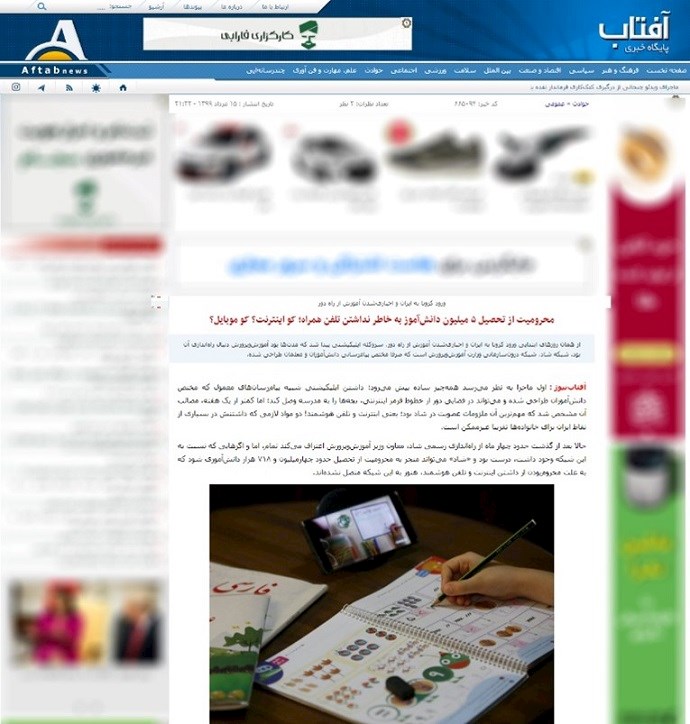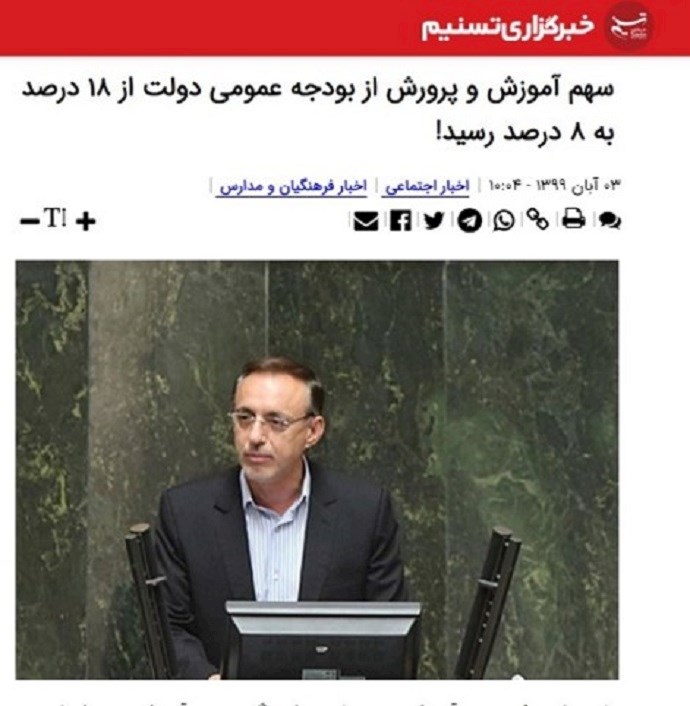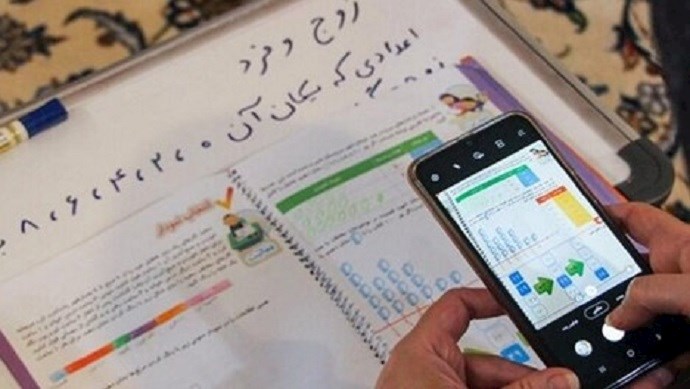Analysis by PMOI/MEK
Iran, December 25, 2020—“We cannot and will not allow our children and young people’s futures to become another victim of this disease [coronavirus],” said the Irish prime minister Michael Martin said during a national address, stressing the importance that schools remain open in Ireland.
Countries have chosen different approaches toward opening or closing schools during the pandemic or temporary lockdowns.
In Iran, however, children and their futures are victims of the coronavirus and the Iranian regime’s policies.
Depending on the coronavirus situation in different regions, the regime announced three major methods for the education of students: Normal education with students present in classrooms, distance learning through the online SHAD Platform, and education via live television programs.
Now almost all schools and universities are shut down and SHAD is the only bridge for students to connect to their teachers. SHAD application requires high-speed internet and high-end cell phones or tablets. This is a huge problem for a country where over 70 percent of the people live under the poverty line and over 30 percent are hungry.
There are many reports about students locked out of virtual classrooms and deprived of education. “Some 3.2 million students are deprived of virtual education,” said the deputy minister of education on December 17 to the state-run Tasnim news agency. “Lack of access to the internet or cell phone is the reason for the deprivation of virtual education,” added Qassem Ahmadi Lashki.
On October 13, the state-owned ILNA news agency also warned that about 4 million teenagers might drop out of school. “Just 10 out of 14 million students have signed up in SHAD…which is an important alert,” the Child Aid Network stated in an open letter to the regime’s minister of education. The Child Aid Network also exposed another side of the same coin: the Iranian people’s distrust of the regime and its instructions. The Network discussed that if other countries take the risk to open their schools, it is because they can provide enough protective material both in schools and houses for the children. “Your two-pronged approach in both opening the schools and virtual education at the same time may indicate your concern about students being locked out of education, but the reality is that both school staff and students’ parents have not taken your instructions seriously. If some countries provide both distance learning and regular school, it is because the students and their parents trust in the schools’ ability to protect students’ lives. Their students also have access to high-speed internet, cell phones, and tablets.”
The state-run website Aftab also confirmed the statistic on August 5 and wrote, “Around 4.7 million students could not sign up in SHAD due to lack of internet connection and smartphones.” What makes the situation even more alarming is that even before the coronavirus pandemic, poverty had deprived millions of Iranian schoolchildren of education.

Aftab news, Aug 5: Around 4.7 million students could not sign up in SHAD
“One-fifth of Iran’s students have absolutely no access to smartphones to sign up to SHAD for online education during the pandemic,” Hamshahri daily reported on October 7. Iran’s east and southern provinces are the most deprived regions in the country. Hamshahri wrote that 40 percent of students in the southeast Sistan & Baluchistan province have no internet access.
Now many students in remote areas of Iran must travel long distances even in bad weather so that they can receive cell phone signals.
Looking at some statistics reveals the situation of students in Iran.
- Some 153,000 students in Khuzestan province are deprived of distance learning due to lack of access to necessary equipment. Khuzestan province is home to Iran’s main oil industry and many oil wells, but its people gain no benefit from oil revenues, which are being plundered by the regime.
- The number of students who dropped out of school has tripled this year. (Shoare Sal state-run website, December 20)
- Hassan Mohammadyari (MP): There is no internet connection in faraway areas of Talesh [Northern Iran] and we are witnessing that students are looking for internet signals in highaltitude mountains. (Iranian regime’s parliament’s news agency)
Meanwhile, the Iranian regime has made a significant investment in expanding its destructive cyber activities. It has also developed a sophisticated and costly infrastructure to shut down the internet separately in different regions to keep tabs on the flow of information when nationwide protests erupt. The regime also allocates a huge amount of money to disconnect the people from the free world by blocking access to many websites such as YouTube and Facebook and messaging applications such as Telegram and WhatsApp. But the regime does not care about students’ problems in connecting to the internet during the COVID-19 outbreak or even providing them with smartphones or tablets.

Tasnim news agency: The quota of the ministry of education has been decreased from 18% to 8%





